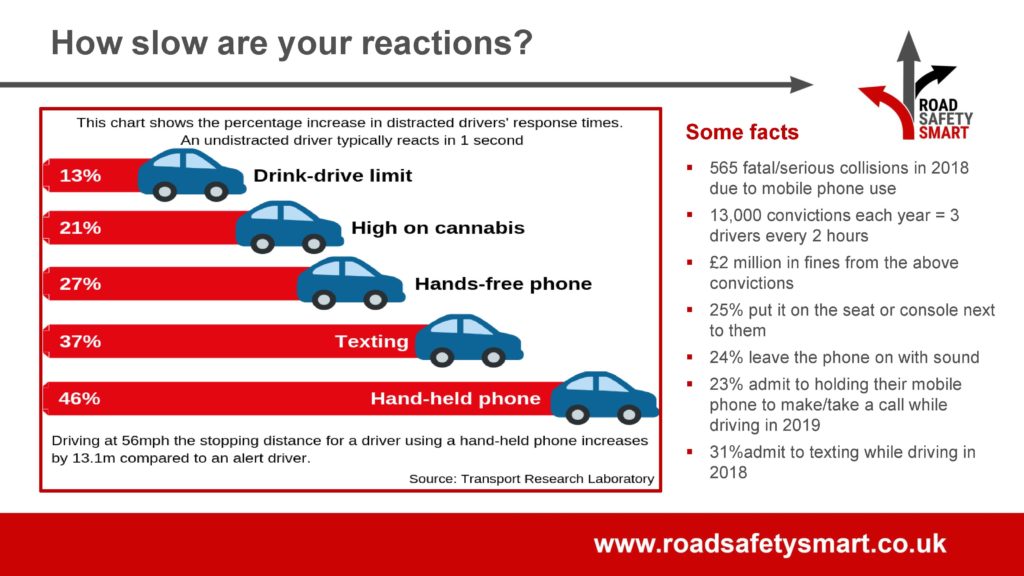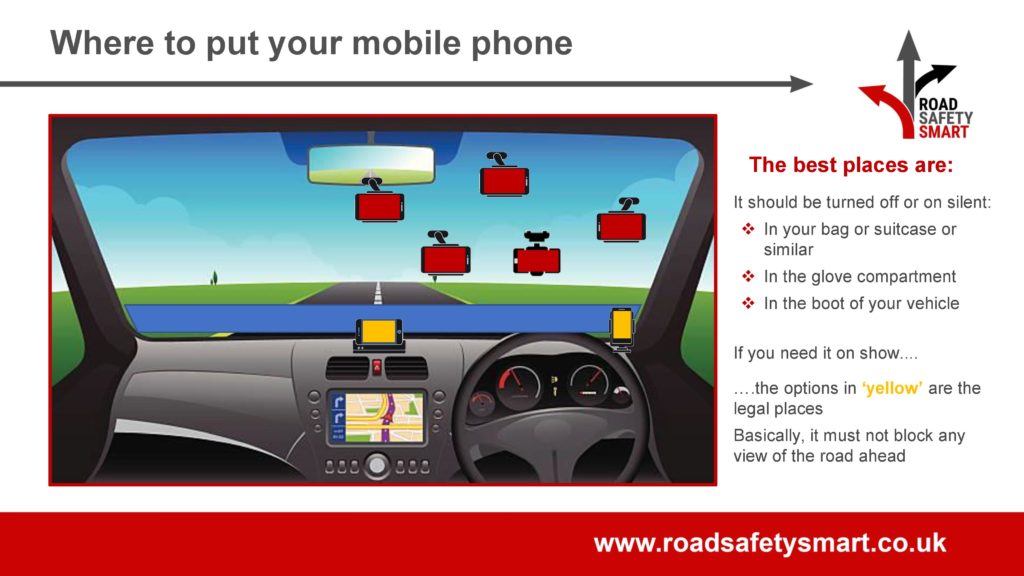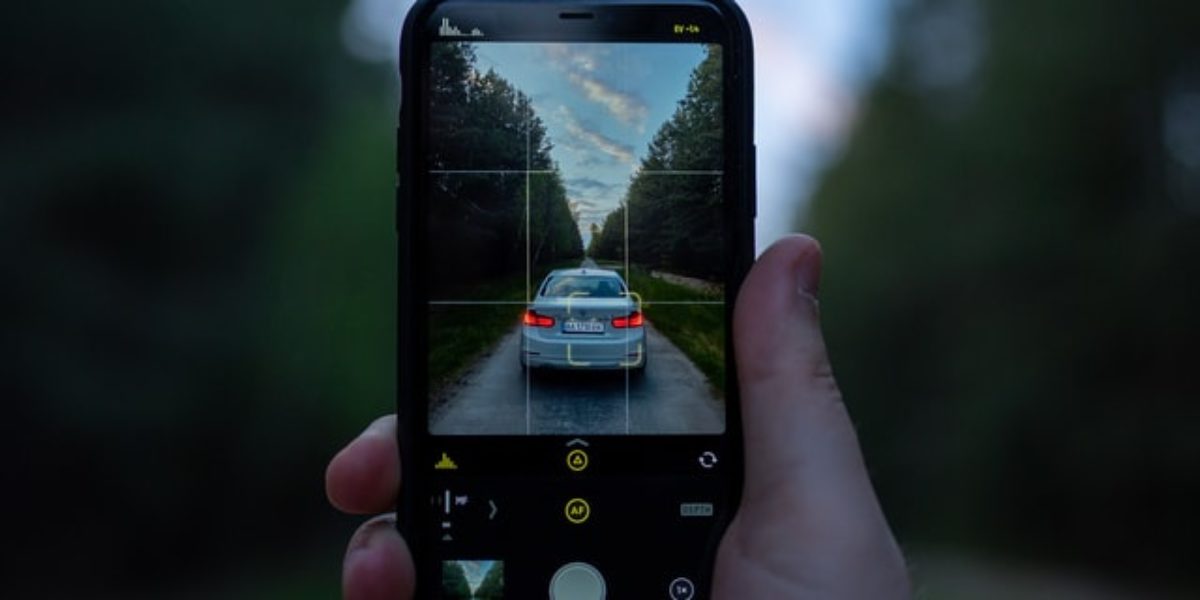It’s not for you!
Using a mobile phone behind the wheel is on the up, but it's a real downer for road safety
Mobile phone use while driving is increasing, which is a statement that will not surprise most people.
Data from Paul Ripley of Distraction999 suggests that 57% of all collisions involve mobile phone use before an impact. Brake, the road safety charity provided data a few years ago that 31% of drivers ‘admit to texting while driving’ and TRL (transport Research Laboratory) established that even a ‘handsfree’ call reduces reaction times fourfold compared to driving just over the drink drive limit.

I think everyone will agree that both the aforementioned statistics are shocking, but they only paint part of the picture. However, what is not surprising is that ‘Generation Z’ who make up a good proportion of learner drivers, have grown up with the technology and do not necessarily see the combination of mobile phone use and driving as a problem.
Some may find this a shocking statement, but it a point that I have found to be true when interviewing under 24-year-olds (in my role as a collision investigator), in particular those who have been involved in a collision because of being distracted by their mobile phone.
Mobile phone addiction and there use when driving is a killer lurking behind every call, text, or message. This raises a number of questions:
Do ADIs actually know how big a problem it is?
This was covered in my last article. ADIs at the last ADIJNC/Intelligent Instructor National Conference and Expo, October 2021, asked: ‘How are we able to find out about information, because I would not know where to look for it, let alone be able to pass it on?’
To find out more about this problem, there are numerous associations and individual experts who can assist such as:
https://www.dtecinternational.com/
https://roadsafetysmart.co.uk/
https://www.distrcation999.com
What are ADIs doing to educate their students about this deadly addiction?
Following on from the previous question, there are numerous educational videos available on the internet. There are some very graphic videos showing collisions involving drivers using their mobile phone, but this once popular use of ‘scare tactics’ has largely been found not to have positive long-term effect. More recently there has been a shift towards using psychology to promote positive driver behaviour. Some of the best videos available are at the following links:
Driving disrupted by Lexus: https://www.youtube.com/watch?v=Eikozy0tS2w
I text while driving: https://www.youtube.com/watch?v=E9swS1Vl6Ok
Life without Zoe: https://www.youtube.com/watch?v=0DHGeLBc5qY
There are also games ADIs can introduce as part of a lesson, showing how distracting even a ‘handsfree’ call can be. One I have used in training sessions over the last five years is amazingly simple:
Show a student a minute long piece of dash cam footage of a normal journey along a road in their local area. While the video is playing, have a conversation with the student throughout the time it is playing. Then ask the student ten simple questions about obvious things they should have seen and remembered from watching the video. So far, I have not had anyone provide more than three correct answers!
What are ADIs doing to educate students about the law with regard to driving and mobile phone use?
This is a grey area for most people and resulting in confusion. There are numerous interpretations of the legislation, which leads to a scenario of ‘Chinese whispers’. This results in the excuse of ‘I was told I could do this or that’.
Perhaps the biggest confusion is the interpretation of the term ‘driving’, with most people understanding this to be when the vehicle moving. It’s why we see so many people queueing at traffic lights with their mobile phone in their hand. This is illegal and students should be advised about this.
The best explanation to provide to a student is that the legislation views the term ‘driving’ as being in charge of a vehicle. This means in possession of the vehicle key and sat in the driver’s seat, regardless of whether the vehicle is moving or not, the engine is on or not, or the key is in the ignition or not.
In addition, how many mobile phones do you see illegally mounted on a windscreen or dashboard? It must be placed in a position that does not inhibit a drivers view of the road ahead, or an unnecessary distraction. Also, if it is being used solely as a sat nav, then this can be fine. But if the sat nav is not active and the phone is on, it is not.

Finally, apart from the obvious fatal or catastrophic consequences that should be taught to students, the basics should be explained too. In particular, how just one offence within two years of obtaining a driving licence will lead a student to losing their licence.
https://www.gov.uk/using-mobile-phones-when-driving-the-law
Are some ADIs setting a bad example to their students?
I know this may be a contentious question, but it needs to be asked. I have seen numerous ADIs in my local area using their mobile phone while they have a student in their vehicle. Sometimes, this is while their vehicle is moving.
Is this the example ADIs should be setting to their students?
If we want to ensure our pupils and all drivers young and old, are driving safely and according to the law, we need to walk the walk and as well as talk the talk. We are the professionals who have the single biggest position of influence on most drivers when it comes to road safety, and that comes with responsibilities.
Andrew Drewary is the Managing Director at Road Safety Smart.
If you would like to know more about this topic and available training courses, please contact Andrew on 07817 043824 or email [email protected] and quote Intelligent Instructor.





